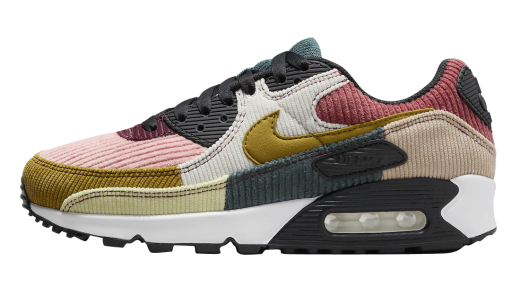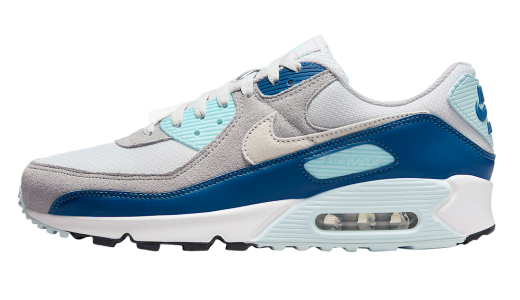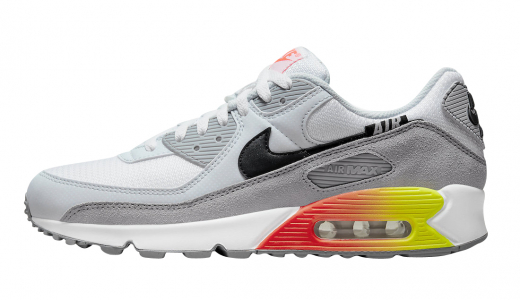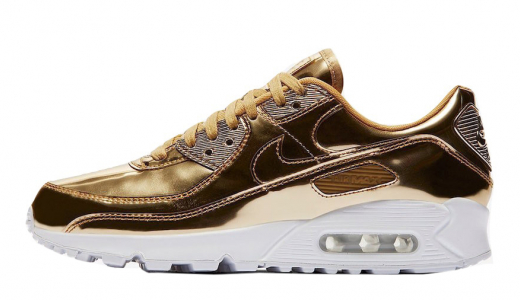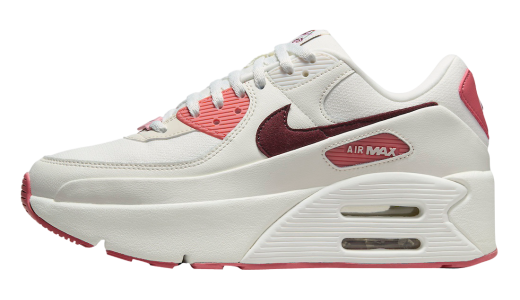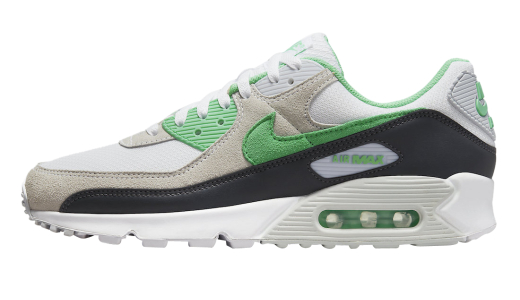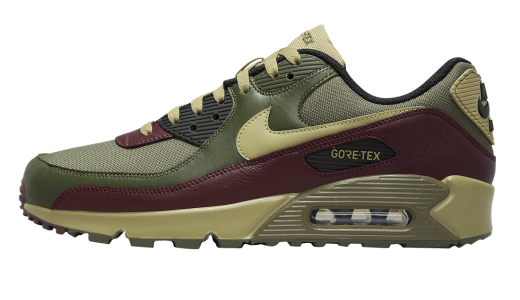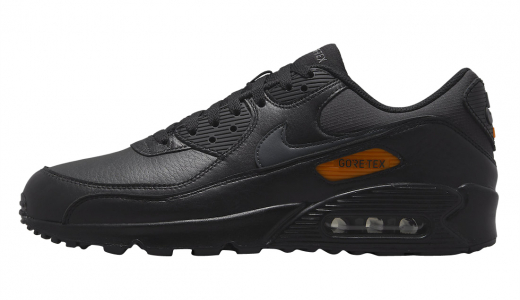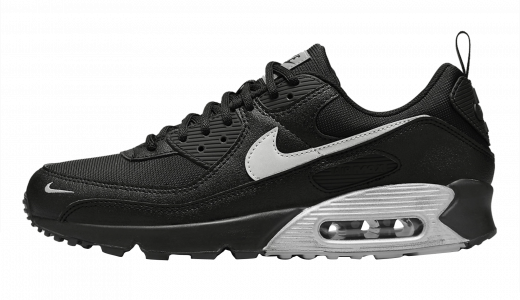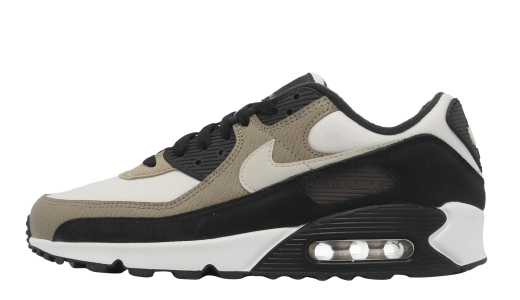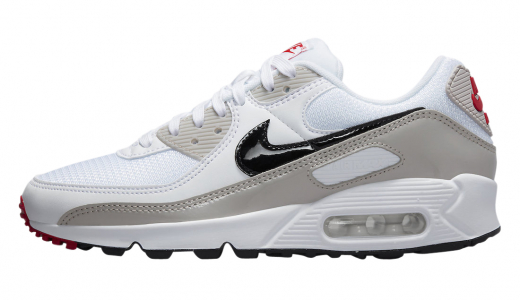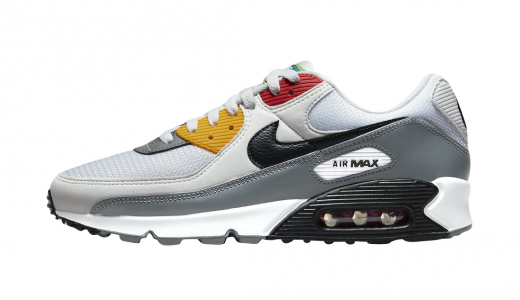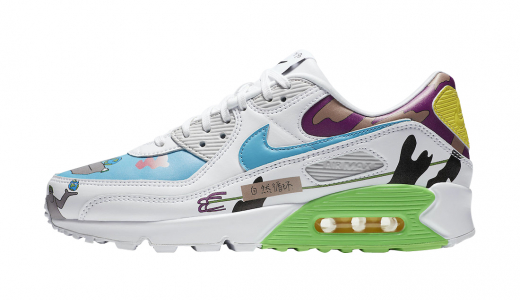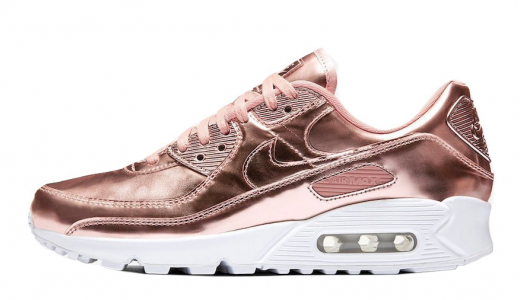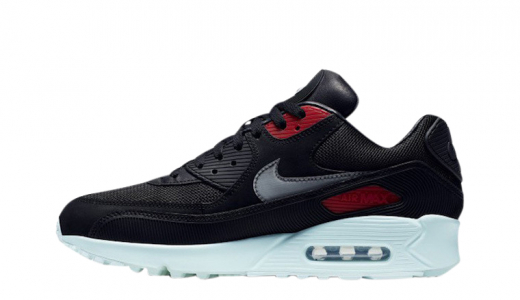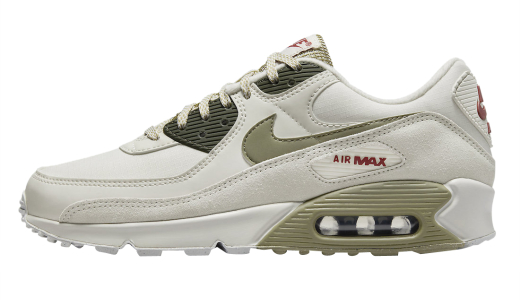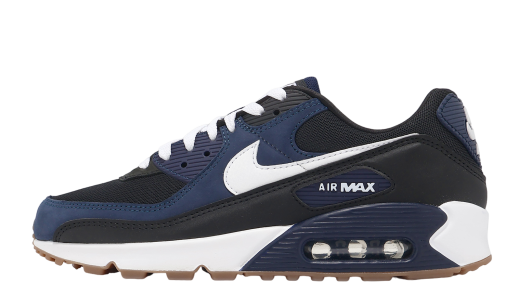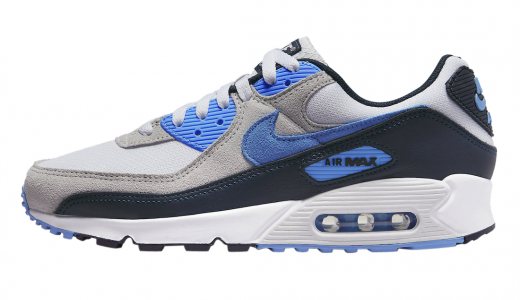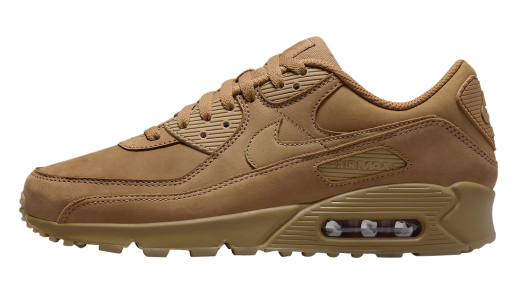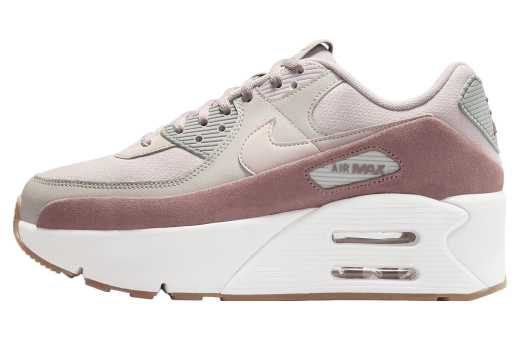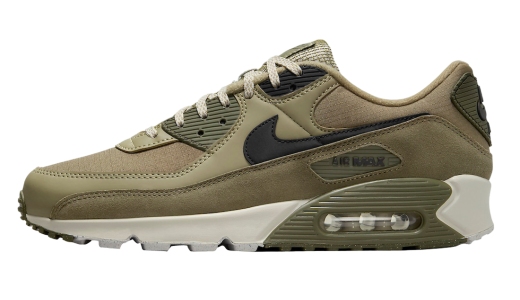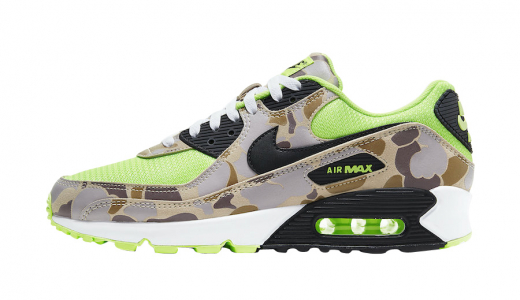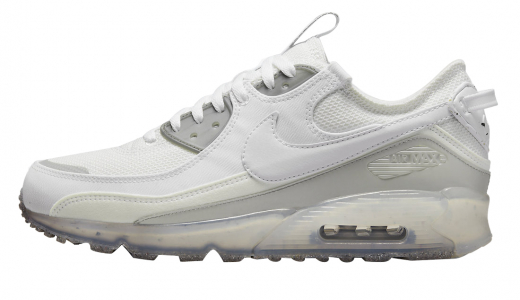Nike Air Max 90
The Nike Air Max 90, originally released in 1990, stands as a quintessential icon of sneaker culture, embodying a blend of athletic performance and streetwear appeal. Designed by Tinker Hatfield, the shoe was initially marketed as the Air Max III until its re-release and rebranding in the year 2000. Its design is distinguished by the visible Air cushioning in the heel, which not only enhances comfort and impact absorption but also offers a sleek, futuristic aesthetic that has captivated sneaker enthusiasts for decades. The Air Max 90 features a multi-paneled upper with durable materials such as synthetic leather, breathable mesh, and robust suede, ensuring both functionality and style. The distinctive waffle outsole provides excellent traction and durability, while the padded collar and tongue offer additional comfort for everyday wear.
Culturally, the Nike Air Max 90 has transcended its original purpose as a running shoe to become a staple in various fashion subcultures worldwide. It has been embraced by diverse communities, from athletes and hip-hop artists to streetwear aficionados and fashion designers. Its vast array of colorways and collaborations with different artists and brands have kept it relevant and desirable through the years. The shoe's adaptability allows it to seamlessly complement various styles, whether paired with athletic wear or casual urban outfits. Collectors and casual buyers alike appreciate both its historical significance and its ability to continually inspire new trends within the sneaker industry. This enduring popularity cements the Nike Air Max 90 as a timeless piece in the ever-evolving world of fashion and footwear.
History of Nike Air Max 90
The History of Nike Air Max 90
The Nike Air Max 90 is more than just a shoe; it's a symbol of innovation, cultural impact, and enduring style. Introduced in 1990, this sneaker has transcended its original purpose as a piece of athletic footwear to become a cultural icon. Over the past three decades, it has influenced fashion, art, and the sneaker community worldwide. This comprehensive history aims to delve deep into the roots, development, and ongoing legacy of the Nike Air Max 90.
Origins: The Air Max Lineage
To understand the significance of the Nike Air Max 90, one must first acknowledge its foundation—the Air Max series. The Air Max line originated in 1987 with the release of the Air Max 1, designed by Tinker Hatfield. Hatfield revolutionized the sneaker industry by integrating visible Air cushioning technology, inspired by the exposed architecture of the Centre Pompidou in Paris. The idea was to show the inner workings of the sneaker, a bold move that intrigued consumers and set the stage for future designs.
The Birth of Air Max 90
The Nike Air Max 90, initially named the Air Max III, was the third installment in the Air Max series. By the time of its release in 1990, Nike had already cemented itself as a powerhouse in both performance footwear and streetwear. The Air Max 90 was designed to amplify everything that made the Air Max 1 groundbreaking but with more refined technology and aesthetics.
Design Elements:
- **Visible Air Unit:** The Air Max 90 featured a larger Air unit in the heel compared to its predecessors, offering enhanced cushioning and a more comfortable fit. - **Material Innovation:** The Air Max 90 incorporated a mix of materials, including durable leather, suede, and synthetic overlays paired with breathable mesh. This combination ensured durability and provided a variety of textures and shades in its design. - **Colorway:** One of the most iconic aspects of the Air Max 90 is its original colorway, known as "Infrared." The striking red shade was strategically placed to draw attention to the Air unit and has remained one of the most beloved iterations of the shoe. - **Midsole Design:** The shoe’s two-part midsole construction, blending polyurethane and a softer foam, provided a balance of responsiveness and structural integrity. - **Outsole:** The waffle outsole featured modified traction patterns to improve stability and grip, making it versatile for both athletic performance and urban environments.
Rise to Icon Status
Though the Air Max 90 was initially marketed as a running shoe, its appeal quickly transcended athletic circles. Its sleek design and bold color choices made it a favorite in streetwear, urban fashion, and among sneaker collectors. Moreover, collaborations with artists, designers, and brands further cemented its status as a cultural icon.
Key Milestones and Collaborations:
- **Early 1990s:** The Air Max 90 gained significant traction across various sports, notably in track and field, due to its advanced cushioning. It also became a staple in hip-hop culture, worn by influential artists and athletes alike. - **2002 - Dave's Quality Meat (DQM) Collaboration:** One of the earliest and most significant collaborations was with Dave’s Quality Meat, a New York City-based sneaker boutique. The DQM Air Max 90 "Bacon" featured a distinctive color palette of pink, red, and brown, resembling slices of bacon and quickly became one of the most sought-after collaborations in sneaker history. - **2005 – Nike iD:** With the introduction of the Nike iD customization platform, consumers gained the ability to personalize their Air Max 90s. This accessibility sparked a new wave of creativity and individual expression, allowing fans to design their unique colorways and materials. - **2013 – Air Max 90 Hyperfuse:** Nike introduced the Hyperfuse technology, using a blend of synthetic materials fused together without stitching, creating a more durable and lightweight version of the classic silhouette. - **2015 - Air Max 90 “Cork”:** In celebration of Air Max Day, Nike released a version of the Air Max 90 made entirely of cork material, a nod to both novelty and the celebration of the shoe’s legacy. - **2017 – Off-White Collaboration:** One of the most notable collaborations of recent times was with Virgil Abloh’s Off-White brand. The “Ten” collection featured a deconstructed version of the Air Max 90 that incorporated Abloh’s signature aesthetic, instantly becoming a grail item for sneaker enthusiasts.
Evolution and Technological Advancements
Over the years, the Air Max 90 has seen numerous iterations, each incorporating new technology and design insights while staying true to the original concept. Here are some significant evolutions:
Material and Comfort:
- **Flyknit Technology:** In the late 2010s, Nike introduced Flyknit material to the Air Max 90, providing a more form-fitting and breathable version of the classic model. - **Engineered Mesh:** Engineered mesh panels were incorporated into some versions, enhancing breathability and comfort without compromising the shoe’s iconic profile. - **Lunar Sole:** Nike experimented with their Lunarlon cushioning system, offering a more responsive and lightweight sole compared to the traditional polyurethane.Sustainability Efforts:
- **Nike Grind:** In recent years, Nike has incorporated recycled materials through their Nike Grind initiative. Various models of the Air Max 90 have been released using this sustainable approach, reflecting broader industry trends towards eco-conscious manufacturing.Digital Integration:
- **Nike Fit:** Recently, Nike introduced the Nike Fit app, which helps customers find their perfect size based on their foot dimensions, ensuring a better fit and more personalized experience.Cultural Impact
The influence of the Air Max 90 extends far beyond just being a shoe. It has permeated various aspects of global culture, influencing fashion, art, and music scenes.
Music and Arts:
- **Hip-Hop:** From Nas to Kanye West, artists have referenced and showcased their Air Max 90s in lyrics, videos, and on stage. The shoe represents not just style but also a form of cultural currency. - **Art Scene:** Artists like Dave White have used the Air Max 90 as a canvas for their works, celebrating its design through paintings and sculptures. Street artists have also incorporated the silhouette in murals and installations, connecting sneaker culture with contemporary art.Streetwear and Fashion:
- **Fashion Runways:** High-fashion brands and designers have incorporated the Air Max 90 into their runway shows, blending streetwear aesthetics with high couture. This crossover has elevated the sneaker to new heights, blurring the lines between streetwear and high fashion. - **Collectible Item:** For many sneakerheads, the Air Max 90 represents a vital part of their collection. Limited edition releases, rare collaborations, and vintage models are highly sought after, often commanding high resale prices and becoming investment pieces.Global Reach:
- **Europe and Asia:** While the shoe has roots in North American culture, its influence has been global. In Europe, particularly in the UK, the Air Max 90 became synonymous with rave culture and the burgeoning electronic music scene of the early '90s. In Asia, places like Japan have seen an explosion in sneaker culture, with the Air Max 90 being a pivotal model in the community.Continuing Legacy
As of 2023, the Nike Air Max 90 continues to be a staple in Nike's lineup, continually being updated with new colorways, materials, and collaborations. The model's ability to balance nostalgia with modern innovation ensures its ongoing relevance.
**Air Max Day:** Celebrated annually on March 26, Air Max Day has become a global event that highlights the history and future of the Air Max line. The Air Max 90 often takes center stage during this celebration, with exclusive releases and special events paying homage to its legacy.
**Social and Digital Movements:** With the growth of digital platforms and social media, the Air Max 90 has found new ways to engage with its audience. Instagram, TikTok, and sneaker forums have become hubs for showcasing collections, exchanging knowledge, and building communities around the shoe.
Conclusion
The Nike Air Max 90 is not just a piece of footwear; it’s a symbol interwoven with cultural, technological, and stylistic threads. From its inception as a cutting-edge running shoe to its status as a global icon, the Air Max 90 has captured the imagination of generations. With each iteration, Nike continues to honor its heritage while pushing the boundaries of design and innovation, ensuring that the Air Max 90 will remain relevant for years to come. The story of the Nike Air Max 90 is a testament to the power of thoughtful design, cultural resonance, and the enduring impact of a truly iconic product.
